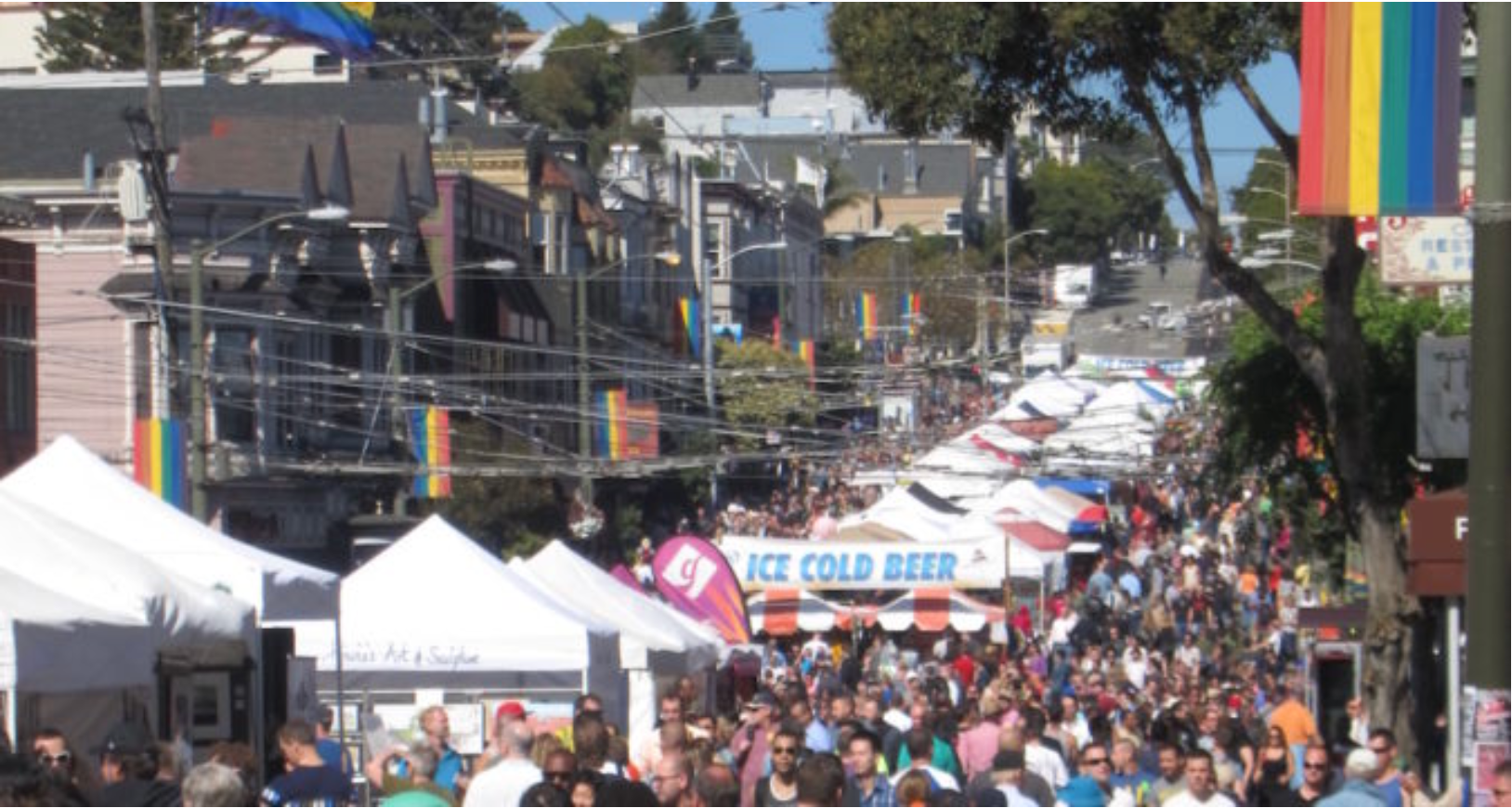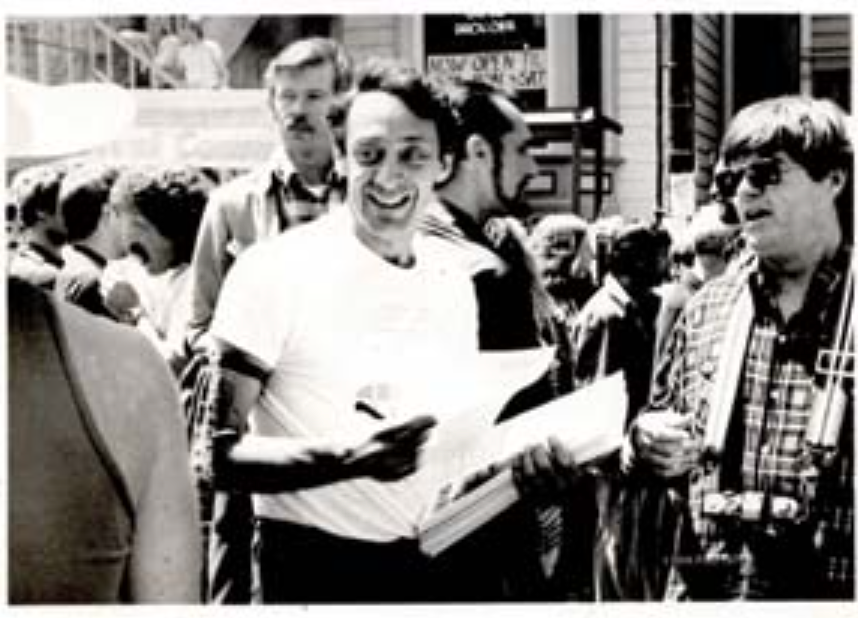Pink money refers to the purchasing power of the LGBTQ+ community.
Over the last 75 years, queer people have often leveraged their economic power to cultivate stability and influence. From fast-growth gay pin-up magazines in the 1950s to Harvey Milk's Castro Street Fair socializing gay consumers with local businesses, pink money has the power to influence business and politics. When we have money, we not only have more power, but are also better able to take care of ourselves and each other.
Pink money is growing rapidly because LGBTQ+ identification continues to go up. An estimated 9.3% of Americans are LGBTQ+, according to the most recent Gallup LGBTQ+ identification poll, with 14.3% of millennials and a whopping 23.1% of Gen Z saying they’re queer. Other reports, like one from Ipsos that surveyed respondents in 27 countries, had similar outcomes.
@nickwolny1 Flaunt your pink money. My newest for Out magazine. https://www.out.com/gay-news/lgbtq-money-economic-blackout-day #lgbtq #lgbt #lgbtq🌈 #queer #queerpride #lgbtqcommunity #lgbtqfamily #lgbtqbusiness #🏳️🌈 ♬ original sound - Nick Wolny
A 2023 estimate pegged pink money at $4.7 trillion globally, with $1.4 trillion of that coming from the US. But with Gen Z being so queer, and their purchasing power projected to grow to $33 trillion by 2030, we’re positioned to become a much larger economic and cultural force in coming years, even in the face of shifting politics.
Here’s why pink money is growing and what recent surveys from around the globe say about our growing economic power.
Key Takeaways
- Pink money refers to economic purchasing power.
- LGBTQ+ identification is rising, driven by millennials and Gen Z acknowledging they're queer in higher numbers.
- Gay and trans rights lead to increased economic activity, output, and well-being.
Historical Examples of Pink Money
Scholar David K. Johnson argues in his book Buying Gay that the pin-up magazines of the 1950s and 1960s, a capitalist undertaking, provided some of the earliest evidence of pink money, at least for queer men.
Magazine stands would covertly stock issues of Physique Pictorial, The Male Figure, and other pin-ups, and they kept selling out. The quiet demand from gay consumers led many shop owners to stock these products, even when it was considered controversial to do so, because they could sell down the inventory consistently.
A more direct example of pink money is the 1974 Castro Street Fair. Harvey Milk, a San Francisco-based gay activist who was later elected to the city’s board of supervisors (and then assassinated in 1978), asserted that queer workers have economic power, and that businesses and organizations should do business with us.
The Castro Street Fair was a reaction to an incident the year prior in which the Eureka Valley Merchants Association (EVMA) tried to prevent a gay couple from getting a business license to open an antique shop in the neighborhood. Residents in and around the Castro weren’t thrilled about the neighborhood’s glow-up as a gay mecca, and this was at a time when discrimination against queer people was still legal.
To prove them wrong, Milk organized a street fair that had an estimated 5,000 visitors in year one, shocking local residents and businesses alike. The power of pink money was undeniable.


Milk also helped the Teamsters union organize a boycott against Coors, which had been holding out on a contract. Having branded himself as “The mayor of Castro Street” by this point, Milk went to the gay bars and persuaded them to stop buying Coors. The boycott worked, Coors eventually conceded, and when Milk won election years later his endorsements included the Teamsters union, the firefighters’ union, and construction workers.
Another example from 1970s San Francisco was when Richard Hongisto campaigned for sheriff with a platform that included allowing gays and lesbians to be hired in law enforcement, a controversial position for the conservative police force.
Appealing to the gay community helped him raise significant funds, and he won the 1971 election as a result.
Rainbow Washing
Today, you see corporations trying to appeal to LGBTQ+ consumers. But the efforts often ring hollow. (“You know how some of these corporations are: rainbow logos during Pride month in the front, cutting checks to anti-LGBTQ politicians in the back,” I wrote in my book Money Proud.)
Activists and special interest groups increasingly work to make consumers aware of how these companies actually behave, according to Dr. Erica Ciszek, an associate professor of communications at the University of Texas at Austin.
“Increasingly, as consumers, we have no tolerance for that,” they told me in a 2022 interview for an article I did for FORTUNE magazine, “because we know we can get our products, services, and needs met by other brands that are doing things differently.”
More recently, many corporations dropped their solidarity the moment the political pressure got too hot. This is making Pride organizations sweat in the short term, as corporate sponsors and donations have dried up.
Queer-focused initiatives and organizations should focus on activating pink money and other grassroots efforts.
Pink Money Statistics, Studies, and Numbers
The LGBTQ+ market is expanding in size, but to understand the psychology and behavior of pink money, it helps to know about the nuances of LGBTQ+ personal finance overall.
The LGBTQ+ Wage Gap
The LGBTQ+ wage gap is 90 cents on the dollar, but varies widely based on race and gender, according to a report published by the Human Rights Campaign in 2021.
These numbers ebb and flow depending on who was surveyed and the recency of the data set. Again, since queer people are barely measured at all in the United States Census, our data sets come from independent studies and think states, so the respondent pools are typically in the thousands, not millions.
For example, one article in the Harvard Business Review noted that gay men passed straight men in average income in 2017, after earning less than them for many years. And a 2020 report from the United States Census found that same-sex couples had higher household income than heterosexual couples.
Many of the published studies we have focus on the gay and lesbian community, which doesn’t give a complete enough picture of LGBTQ+ versus non-LGBTQ+ earning power.
Media Tropes
One note to make here is that the perception of whether queer people make more money is one that is often pushed or exaggerated in the media.
The typical “fabulous gay best friend” trope in television and movies, along with the advent of shows like the original Queer Eye for the Straight Guy, paint a picture of hypersuccess. (In the original run of Queer Eye, they were teaching those boys how to eat caviar, y’all!)
Brands should be aware that this framing doesn’t accurately reflect the gay community as a whole.
LGBTQ+ People Have Less in Savings and Investments
We’re working on this! But, yes, queer people’s focus on survival, acceptance, and identity in many parts of the world may stunt their interest in personal finance hygiene.
The LGBTQ+ Money Study, a survey of 2,005 Americans commissioned by The Motley Fool in partnership with Debt Free Guys, found the following:
- Queer Americans are less likely to use financial planning tools like retirement savings, life insurance plans, and estate planning.
- 2 out of 3 LGBTQ+ Americans say they have “a high amount of financial stress.”
- The top two financial concerns are keeping up with living expenses and saving for an emergency.
- Nearly half of LGBTQ+ Americans say they have experienced discrimination by someone in the financial services industry.
- LGBTQ+ Americans are more likely to have debt for non-appreciating assets, such as student loan debt, credit card debt, and personal loan debt.
- LGBTQ+ people are less likely to have a mortgage.
- Nine out of 10 queer people don’t have a will.
Additionally, 50% of LGBTQ+ people say they struggle to save, compared to 38% of heterosexual people, according to a survey from Experian.
LGBTQ+ people are more likely to explore speculative assets, such as cryptocurrency, and they’re also more likely to dabble in side hustles or other forms of entrepreneurship in order to make ends meet.
LGBTQ+ People Are More Likely to Be Child-Free
And it ain’t for lack of trying! Potential legal restrictions, lengthy adoption processes, and social stigma are just three of the many reasons why LGBTQ+ people are less likely to have kids.
As a result, queer people are less likely to experience career gaps from taking maternity or paternity leave (which shouldn’t impact careers for women, but it still does), and are less likely to incur the costs associated with raising children.
LGBTQ+ People Are More Likely to Live in Cities
I moved to a metropolis after college because I wanted to be around other LGBTQ+ people, and have lived in one ever since. Queer people move to urban environments for feelings of both belonging and safety (and having great restaurants, bars, and nightclubs doesn’t hurt, either).
This shapes the careers we pursue, how we spend our time, and where we prioritize discretionary spending. For example, queer people are more likely to work in industries like hospitality and entertainment.
LGBTQ+ People Experience More Mental Health Challenges
Sadly, nearly 40% of LGBTQ+ people experience a mental health condition, more than double the rate for heterosexual people, according to the Anxiety & Depression Association of America (ADAA).
Flailing mental health can make it more difficult to regulate spending, and can lead to behaviors like avoidance and numbing that are financially destructive over time.
A Note on LGBTQ+ Overcompensation
One note to mention here is that many queer people do end up having lucrative careers, but achieve this status using self-flagellation or overcompensation triggers.
In the book The Velvet Rage, psychologist Alan Downs, who has worked primarily with cisgender gay men in his career, talks about the three phases of acceptance he observed in his clients.
- Phase one: Not yet being out of the closet.
- Phase two: Being out, but still feeling “broken” or “wrong”, leading to overcompensation triggers related to body image, career, or other areas of performance.
- Phase three: Learning to fully love oneself and achieve unconditional self-acceptance.
Many queer people fester in phase two. We are out, we have our social circles and communities, and yet we still feel lost. We reclaimed the pink triangle as a symbol of LGBTQ+ solidarity, have been through so much, and yet we continue to feel like we are not enough.
We feel the need to be the best, or outperform as a way to prove we are enough. Many of us have rocky or strained relationships with our families.
These observations apply to a small niche within the LGBTQ+ community, but represent a larger theme in how the conditioning we have around what being gay does and does not mean can influence our career decisions or self-investment priorities, which shapes purchasing behavior.
@nickwolny1 [Oops I messed up! reposting] This gay book is controversial! Antoni loves it, but a lot of other queer men don’t. Here’s why and what it’s about. It’s The Velvet Rage: Overcoming the Pain of Growing Up Gay in a Straight Man’s World. First published in 2005 and written by clinical psychologist Alan Downs, it's been translated into 27 languages. The big idea in The Velvet Rage is that queer men go through three phases of self-acceptance. The first phase is not being out of the closet. That ends with coming out, and sadly some men never get past phase one. The second phase is when you’re out, but you still feel shame about being gay or queer, so you numb or you overcompensate. We see this in various facets of gay male culture, hypermasculinity, perfectionism at work, higher rates of substance use disorder, and so on. We’re out, but we still create our personality from a place of shame. The third phase is breaking free from all that and achieving self-acceptance. The main criticism of The Velvet Rage is that its scope is too narrow. It's very white, gay and cis. The anonymized anecdotes from gay men throughout the book are Downs’ former clients, he was practicing in Palm Springs, so as you can imagine, the source material leans in that direction. Here was a fairly critical review in the Toronto Star, for example. Nevertheless, the book has been translated into 27 languages, so it’s clearly struck a chord. I liked The Velvet Rage’s anecdotes approach enough that I did something similar for my book Money Proud, which is a guide to personal finance for queer people that comes out in December. I interviewed queer people around the country and then sprinkled about 25 commentaries throughout the book. Have you read the Velvet Rage, and if so, what did you think of it? #lgbtq #lgbt #transgender #bi #lesbian #gay #lgbtqi #🏳️🌈 #🏳️⚧️ #queer #queertok #books #booktok
♬ original sound - Nick Wolny | ✍🏼💰🏳️🌈 - Nick Wolny | ✍🏼🏳️🌈
Other Business Facts and Figures About Pink Money
Pro-LGBTQ+ companies outperform their competitors
- In an interview with Bloomberg, financial services company Credit Suisse noted that their stock basket of LGBTQ-inclusive companies consistently outperformed the overall market.
- An analysis by the Human Rights Campaign on 15 years of Corporate Equality Index data found that pro-equality companies outperformed on both revenue and profit.
Same-sex marriage
Same-sex marriage in the US has contributed up to $125 billion in the US economy through increased net worth and consumer spend, according to a report from Boston Consulting Group.
Frequently Asked Questions
Is Pink Money the Same as Pinkwashing?
No. A better parallel would be to compare pinkwashing and rainbow washing. Both refer to a company signaling that it supports the LGBTQ+ community to hide its contribution to anti-LGBTQ initiatives.
Pink money isn’t campaign-specific; it refers to the overall economic power of the LGBTQ+ community and how those consumers choose to spend their money.
How Can my Organization Better Reach the LGBTQ+ Market?
Normalize year-round awareness. There are many LGBTQ+ awareness days throughout the year; choose any or all of them to build campaigns from and your competition will have practically evaporated, giving you tons of runway to capture market share.
Get specific. Companies often blunder in pride marketing efforts because they make a superficial, blanket statement about all LGBTQ+ people. The queer experience is deeply varied; what I encounter as a white cisgender gay man is hugely different than the experiences of bisexual people or the TGNB (transgender non-binary) community. Speak to one experience and let others listen.
Pass the mic. If the different subsets of the LGBTQ+ community and rising cancel culture have you feeling uncertain, empower queer voices who can reach and engage this market on your company’s behalf. This is where influencer marketing shines: You’ll financially empower the voice of someone in a marginalized community while simultaneously making a brand statement that resonates with consumers, especially Generation Z.
Pink Money Is Ascendant
And it’s our responsibility as queer people to take control over our money so we can wield this economic power where it counts – and live a more stable, joyous life along the way. ◆


